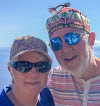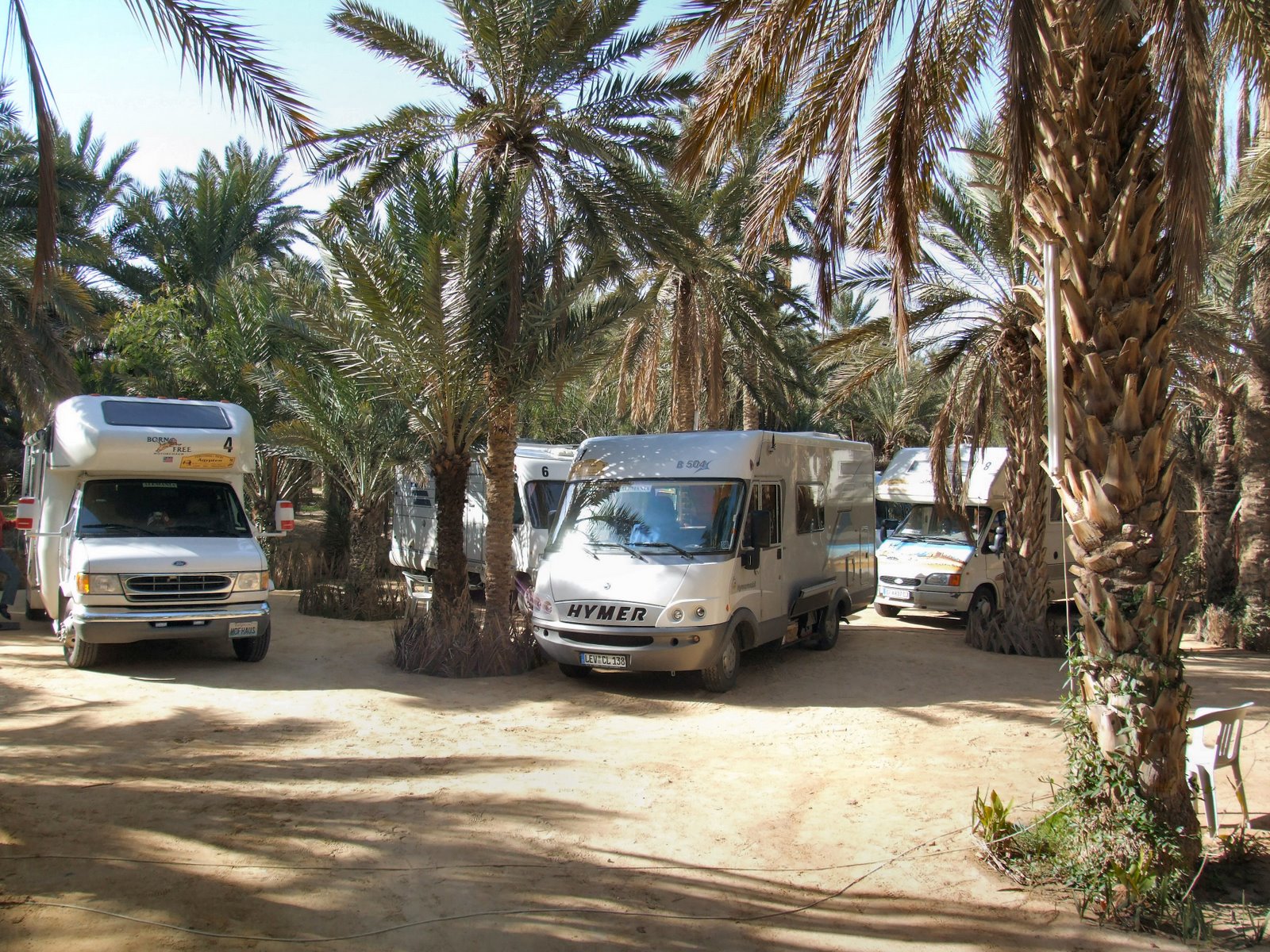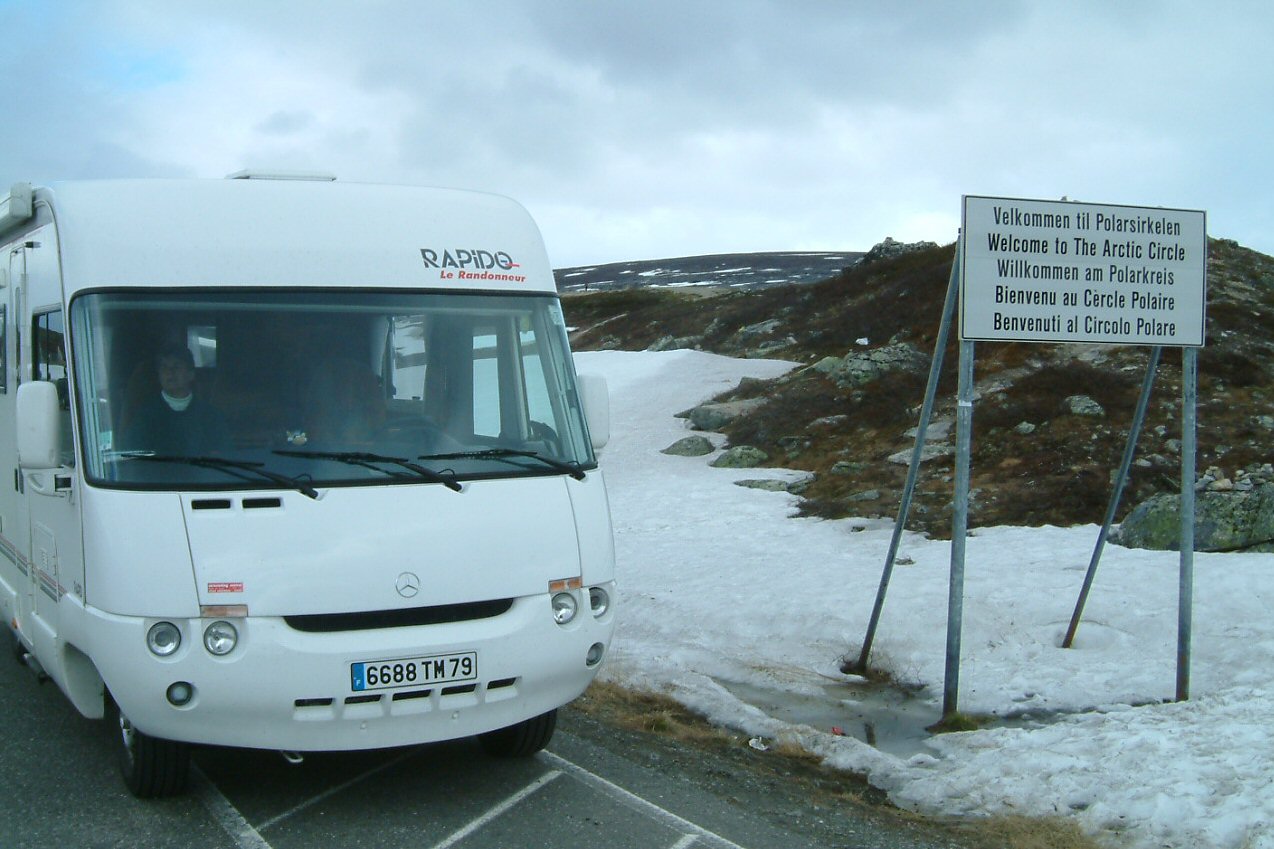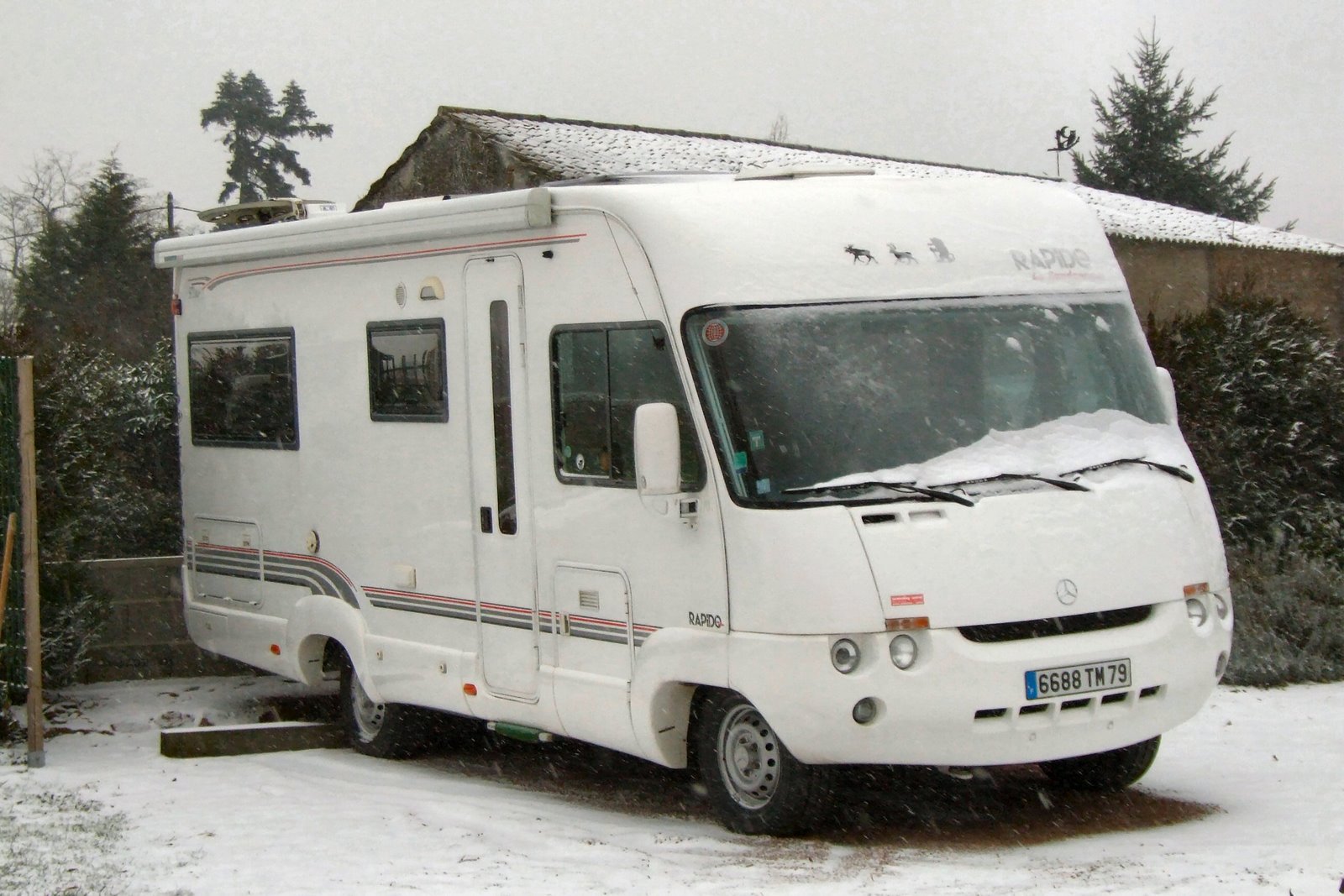Part 3 of this Journey
The nine hour voyage from Nuweiba, in Egypt, to Aqaba across the Gulf of Aqaba was tedious. The ex Danish Ferry was very old and seemed to go exceptionally slowly and the ship was very crowded although not full of vehicles. We had booked our passage in Cairo and there we had to pay in US dollars a total of 237$ (260€ or about £190) for our camper and two passengers. We soon decided to lash out the 10€ (65 E£) for a cabin and had a good rest. When the ship eventually docked it was already dark and fortunately the formalities took only about 90 minutes. Our group had a visa but we had to pay diesel duty, compulsory third party insurance and a passport fee which totalled 208 Jordanian Dinar (260€, £142), before we left the port. Fortunately the campsite at Aqaba is just a few minutes down the coast towards the Saudi Arabian border so we got there quickly for our 2 night stay. The site offers an open sandy field facing the sea, electricity, water and a small WC/Shower block (but we chose not to use that).
The next morning we found out we had to put our clocks on another hour because of Jordan Summer Time which is CET + 1 hour. We soon caught a bus from outside the site into Aqaba at a cost of 0.5JD (0.55€, £0.37) and enjoyed a new shopping experience, no more being hassled to “come into my shop”, a good lunch at Ali Baba’s Restaurant and we met Radif who was an extra in the film Lawrence of Arabia and could not wait to show us his memorabilia.
There are three ways north from Aqaba, The Dead Sea road, the desert road and the King’s Highway. Initially we took the desert road to Wadi Rum, having made a brief diversion to the local Safeway supermarket. The Fiat that had first broken down was having major problems again and was seeking help in Aqaba but when it caught us up it had developed a major diesel leak.
We spent a day exploring the wonders of Wadi Rum in some Bedouin Jeeps, plus we enjoyed a great walk and some fantastic bird watching seeing especially the Egyptian Vulture launching off the high cliff faces. It is in places like this that motorhomes are unbeatable, camped right in the heart of Wadi Rum at the edge of the small Bedouin village surround by the most magnificent scenery you could ask for. How else could you cook kippers and poached eggs for breakfast in this location? (Sadly they were the last from our small freezer!).
The next day we planned to drive the 125kms (80m) to Petra along the Kings highway but first there was the problem of the Fiat that just would not go for more than a few seconds. Eventually it was agreed that the large MAN based motorhome in the group would tow him to Amman a distance of 300kms (190m) with another smaller camper acting as tail end Charlie. We then left along the King’s Highway, so called because Moses sought permission to use this route for his passage from Egypt, to the Jordan Valley, from the local Kings. It is a marvellous route rising to 1700m with great views across the rift valley towards Israel and the Negev Desert. We saw eagles and falcons as we stopped to let a large flock of sheep pass by along the narrow road and were soon in Wadi Musa the town above Petra. It was great not to have the police either present or constantly stopping us and recording our registration details which had become the norm in Egypt. Here we camped in the car park of a small hotel and were able to use the showers and toilets that were provided especially for campers at the same level. Built into the side of a cliff we were at level 0 and reception was on Floor 6 but that did not distract from the good Turkish bath and the Internet point that was available. The tow vehicles eventually caught up with us having left the Fiat in an Amman garage.
Duly rested we were ready to explore the wonders of Petra. The hotel minibus took us down through the village to the ticket office and we walked through the canyon towards the first sight of this Nabataean treasure. Built it is thought in the 6th century BC it is quite awe inspiring and you quickly get used to the vendors of horse, camel and donkey rides. As we progressed through the valley beyond a small boy on a donkey appeared alongside us. “What’s your name?” he asked my wife, “Judith” she replied. “I am Fariq” he said and then looked at me and said “And you are Michael”. Now no one calls me Michael, only my mother and I had nothing showing my name. So how did he know? We tried asking but he just smiled and said “I am a Bedouin”. After some weeks I have still not solved this fascinating puzzle. Fariq reappeared later that day and told us all about his family and put us on the correct path for some mosaics in a Byzantine Church, he never once tried to sell us a donkey ride or souvenir and for a 9 year old he spoke perfect English.
After a truly fascinating, puzzling and tiring day we returned to our hotel for a good nights sleep. The following day I spent some time checking our vehicle; oil, water, tyres, batteries etc. before enjoying another long Turkish bath. The news about the Fiat was encouraging a new diesel pump had been fitted and the leak cured. After a day of comparative rest we continued along the King’s Highway towards the Christian town of Madhaba where the town centre church of St George welcomed us in there car park and we had a great dinner in the Haret Jdoudna restaurant in the town. St Georges is the home of a fascinating mosaic showing the known world about 2000 years ago, orientated to the east from the Mediterranean.
From Madhaba we went the short ride to Mount Nebo, where Moses is said to have seen Jordan for the first time. Mount Nebo is at 1200m and you have fascinating views of the Jordan Valley and the Dead Sea. We then descended from 1200m to minus 400m to the banks of the Dead Sea in just a matter of minutes. We had swum in the Dead Sea a few years ago, when we visited Israel, which was fortunate because this time we didn’t try to repeat the experience as it was cold with a strong wind blowing. After a night camped on the banks of this salty lake we made the steep climb up to Amman which we had to cross to get to the German sponsored school where we were to stay for a few nights. As we entered the school the first sign across the large landscaped gardens was to the metalwork shop but it directed you to the “Forgery Training Department” this was just one of many interesting translations we came across on our journey.
Amman is situated on the site of the earlier city of Philadelphia and, like so many, built on seven hills. We had a fascinating day touring the capital with its impressive mosque and citadel before heading further north to Jerash. Jerash is an old Roman City that is well preserved and we enjoyed some interesting entertainment when the locals put on a chariot race, and some Roman Army manoeuvres in the Roman Hippodrome. With the commentary in English it was a real piece of theatre and light hearted fun. Unfortunately the campsite was some distance from town but we soon found a friendly taxi driver who was a fountain of knowledge and reasonably priced. He took us to a large family restaurant for Sunday lunch which was packed full of locals and as they did not have any menus in English or German we had what everyone else was having and that turned out to be a truly memorable meal.
From Jerash we drove north to the Syrian border on the road to Damascus. Getting out of Jordan was fairly simple but time consuming and cost 15JDs (18€) after we fought off the locals who just pushed in at every opportunity. Having driven the 5kms across no mans land, covered with olive and cedar trees and some well armed soldiers, we reached the Syrian border. The formalities took just over 3 hours and diesel tax was 83€ per week or part week, our original plan was to stay 9 days but that was quickly changed to save the second 83€ payment. Diesel in Syria was 7S£ per litre (0.11€ or £0.07) but we soon realised that the pumps were not particularly accurate and that was not to our advantage. The campsite at Damascus was not easy to find and that lead to an interesting tour in itself.
Damascus, said to be the oldest city in the world, was wonderful, we toured the souk and ventured in to the best ice cream shop in Syria, or so our guide book told us. It was great, meeting the locals (there must have been at least 250 people inside) and trying the ice cream and rice pudding. Then we tried a tea shop before visiting other parts of the souk buying things we realised we could not live without or so I was told! Of course we did not miss the obligatory visit to the citadel and mosque.
Damascus behind us and we were driving east, through boring never ending desert, the signs kept saying Baghdad. Our lunch time stop saw us next to a worried looking driver who was delivering tanks (water) to Iraq. The worrying thing was he wished us luck. When we got to the sign that read Baghdad 100kms (63m) we turned north towards Palmyra our next stop. Here we camped alongside the Roman ruins in the car park of the Zenobia Hotel. The guardian took it upon himself to wash all the camper vans, whether you wanted it or not and wanted 3€ (£2), the state mine was in after 12 weeks travelling it was well worth it. We spent the next day walking around the ruins, and the temple of Baal, and the old city which was a great experience and worth the journey. Here we met a young Swiss couple who had shipped their Land Rover to India and then had driven through Pakistan, Iraq and Turkey to get into Syria, their stories were fascinating.
Already thinking about a trip to India we drove west from Palmyra towards Homs. The desert was just as bleak but as the Syrians had recently withdrawn a large Army from Lebanon we soon realised where all the hardware and troops were now stationed. When we stopped for coffee the police were on us within minutes, but after a friendly chat we finished our coffee and proceeded to Krak des Chevaliers, a Teutonic Knight’s Castle built between the 11th and 13th centuries. We spent a few hours climbing up the highest parts and wandering down all the inner areas of this historic monument. It was strange to think that Richard the Lionheart walked on these ramparts during the crusades.
From Krak we descended down to the valley below and drove north to Allepo, Syria’s biggest city. In fact we stayed some 20kms west of the city in a small village campsite next to a mosque. We got a bus into Aleppo so that we could visit the famous citadel, and of course the mosque, and spend a few pennies in the souk which is allegedly the world’s largest. We stayed in town for the evening to sample Syrian cuisine in a famous restaurant and this meant we had to get a taxi back to the campsite at about 11.30. The price was fine but the taxi driver’s driving was an absolute nightmare, we came across a three car pile up and said if they drive like this guy it is no wonder there aren’t more accidents. Anyway we got back and prepared to set off the next morning for the Turkish border some 26kms away.
At the border the most important thing was to get our carnet stamped showing our exit date so that we could get our cash deposit back. Unfortunately the border was chaotic and we were forced to join a queue of dozens of trucks. Nothing was moving and talking to a few of the drivers it was clear that it would take them 5 days to get through to Turkey because of problems caused to normal trade routes by the Iraq war. We were then told that unless we moved quickly we would be trapped for 3 days as the exit was being closed. The only thing was to try the other way and go through the other entry gates, this seemed to work but the narrow road through the 8kms of no mans land turned out to be a double queue of trucks, some trying to leave and others trying to enter. There gap between the trucks was just a few inches and it seemed impossible to make any headway.
However a few smiles and hand gestures and hey presto a small gap opened and we started the drive of a lifetime, if the wing mirrors could get through then so could the rest of our van. Truck driver’s who were going to be there for up to 5 days anyway were most co-operative, and most moved just enough for us to pass. When we reached the point where the driver had disappeared we were forced to head for the small hard shoulder, ensuring the we did not fall into the ditch, then we got back into the middle “lane” again. When we thought we nearly had the problem solved we met, head on, a group of Australians doing exactly the same thing after some heated negotiations they pulled in between two trucks so that we could pass. After nearly 2 hours we made it to the Turkish frontier. Inside Turkey there was a queue nearly 12kms long of parked trucks of every description waiting to join the 5 day queue.
Whilst this was not the end of our trip it is the end of this story. We thoroughly enjoyed the 5 months that the whole trip took and would encourage others to do the same magical circle through North Africa and the Middle East.









